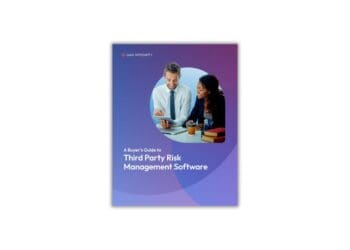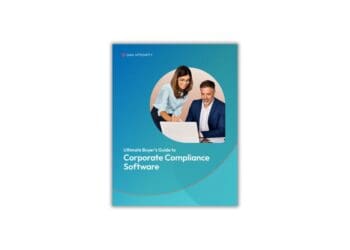Technology projects can fail when the technology solution ultimately does not fit the needs of the users. The more the technology change impacts personnel functions, the higher the risk of diminished ROI or outright project failure. Technology management consulting leader Ed Bouryng offers six tips for corporate leaders trying to steer their organizations through technology projects.
Enterprise technology investments should, when executed properly, yield a return over many years and are often necessary for an organization to remain competitive. Not having the proper technology in place is enough to make a strong organization non-competitive with its peers. And as technology matures — as we’re seeing with artificial intelligence right now — there’s an expectation that the operations and processes within organizations mature as well.
A pure technology investment is generally a reliable investment with predictable outcomes. This makes the investments low-risk, and accounting principles that support accurate financial reporting are up to the task. So then why doesn’t this align with the reported horror stories relating to technology investments? According to the Boston Consulting Group, 70% of digital transformations fail. But even if your project doesn’t end in disaster, your return on investment will still likely fall short — McKinsey study found that a staggering 17% of large IT projects have such poor outcomes they can threaten the very existence of the company.
But the technology itself is generally not what puts your investment at risk: The more the technology investment involves human change, the greater the potential for returns — and the greater the risk of loss.
Take, for example, a slick new asset management system that can theoretically meet every must-have you need. It can integrate, as expected, in your back-office and move your team away from the myriad spreadsheets they currently use. So then why is it shunned by your employees? Most employees will probably do as their manager tells them to: They will transition their work to this new system — an additional task for them — but they will continue to rely on their spreadsheets. The investment you made in this expensive new system does not provide the value to the organization you expected.
Such an investment may teeter on the verge of failure over the life of a project and will most likely fail to meet anticipated returns. This can lead to further investments — additional, unplanned money spent — to prevent the project from outright failing and to realign the technology solution to more effectively meet the needs of your organization. The fear of failure will often lead to more investments without changing course, all while tamping down questions from your team that may help lead to solutions. Down the investment rabbit hole you go.
6 best practices to maximize ROI and minimize risk
Position the project as a technology-enabled change project within the executive team
Get the executive team onboard with the concept that a successful return on investment and proper risk management oversight requires the project to center on the people of the organization. This is a “technology project” in the minds of most executives and you are likely going against the grain as you employ this people-first approach.
Identify a project leader at the executive level — if possible — to oversee immediate, short-term and long-term project requirements
The project is equivalent to starting an enterprise — it is going to require a lot of energy. Foremost, the right person to lead your project must have that energy, know the culture and the people and believe that your people are the key element of success. This project leader should also be capable of managing technology and understanding project management, though these skillsets can be added to supplement that capability.
Not Your Grandpa’s C-Suite: Improving Tech Fluency at the Top of the Organization
In our hyper-connected world, just about every company is a tech company. As commerce and technology become increasingly intertwined, it’s even more important for senior executives and board members to ensure they have basic technological understanding, and Protiviti’s Jim DeLoach has the important questions for them to answer.
Read moreDetailsEnsure budget is allocated for the people in your organization
Once the executive team is aligned and ready to employ a true people-centered strategy, budget accordingly. Employee-driven change is a far greater challenge than a technology change — yet this basic truth is commonly overlooked throughout implementation or simply under-supported by a modest change management budget.
A healthy people-focused budget will initiate employee onboarding and the shifting of responsibilities. It will also provide resources to identify and remedy single points of failure, such as the lone subject matter expert who is the only person who understands a specific business process — for example, the one person relied upon to bring together a key financial report every quarter-end.
A sufficient change management budget requires:
- Pre-project planning
- Allotments for new hires and retraining in order to avoid employee burnout and to best position your organization upon conclusion of the project
- Shared budget responsibility for your executive team
- Organization-wide communication and collaboration from start to finish
- Flexibility to ensure additional resources can meet discovered needs and unexpected challenges, all with the focus on your people
With budget allocated for your people, you will be able to get employees involved in your change management project from the start without overloading them. For example, your top subject matter expert in a certain area or department can provide key insights and inputs into the department-specific solutions needed, maintain ongoing operations and lead the change effort among their peers and colleagues.
It will be tempting to take advantage of this person and their engagement as the project progresses, but if they are overused or overworked, they will likely burn out or underperform. It is far better to budget and resource each of these tasks, backfilling as needed, and sparingly rely on that singularly important resource for the leadership and guidance they provide. In essence, the proper budget not only enables change management but buffers your employees from the very risks associated with these types of transformations.
Ensure your contracting vehicle has sufficient flexibility
Technology is relatively predictable and fixed-price contracting is more appropriate for pure technology projects. Change projects, on the other hand, are people-focused. This process, which is far more dynamic and complex, will require greater flexibility.
Take, for example, a fixed-price project that includes a set scope with detailed requirements that must be met by the contractor. The requirements are written to primarily support only the end goals of the technology project. Inferred in those requirements are all the underlying processes and people-oriented transitions the technology project must achieve. All of that perspective is missed in the written requirement.
The contractor must meet the stated requirement but does not need to meet what wasn’t stated, including all of this underlying perspective. While this may not be in writing, it will certainly come out during the project once you meet with and interact with the people. Yet, you and the vendor have an inflexible contract vehicle, requiring you to change order as you go. The key point here is to have flexibility in your contracting — the more an organization’s people are involved and impacted, the more flexibility you will need.
Prioritize active involvement at the employee level
While an executive team typically understands the need for enterprise technology and the value such sizable investments bring, corporate leaders tend to overlook the impact of technology on employees and employee processes.
Gain traction within your executive team by consistently providing your perspective with a mindset on your people. Within your organization, be a leader for the change to meet executive goals, while supporting and staying connected with the very employees who are set to use these products and processes.
Identify project change representatives across the organization to support the day-to-day transition to facilitate this process. Further, by setting expectations with senior management, project change representatives become more invested in the success of the transition and are incentivized to achieve the stated objectives. These structures will increase investment at the employee level and give your people the opportunity to ask questions, identify unforeseen roadblocks and provide their unique perspective to support the executive vision with solutions that also meet practical operational needs.
Monitor the balance between the technological progress that is being made with the progress and health of the people-change effort within your organization
Generally, technology advances will be way ahead of the progress employees are making with the change effort. You may even be advised that this is typical and that a separate change management effort (i.e., training) will be available to employees later in the project. While a delayed and isolated training after the bulk of the technology transition has taken place will help (and is better than nothing at all), it makes employees secondary to the technology. This will often lead to employees underperforming with the new technology.
On the other hand, employing a people-focused mindset will balance these efforts throughout the project. Frame your positions and decisions with this balance in mind to give your employees — and your organization overall — the best foot forward.




 Ed Bouryng is founder and president of Metaformers, a management consulting and cloud delivery solutions company.
Ed Bouryng is founder and president of Metaformers, a management consulting and cloud delivery solutions company. 








